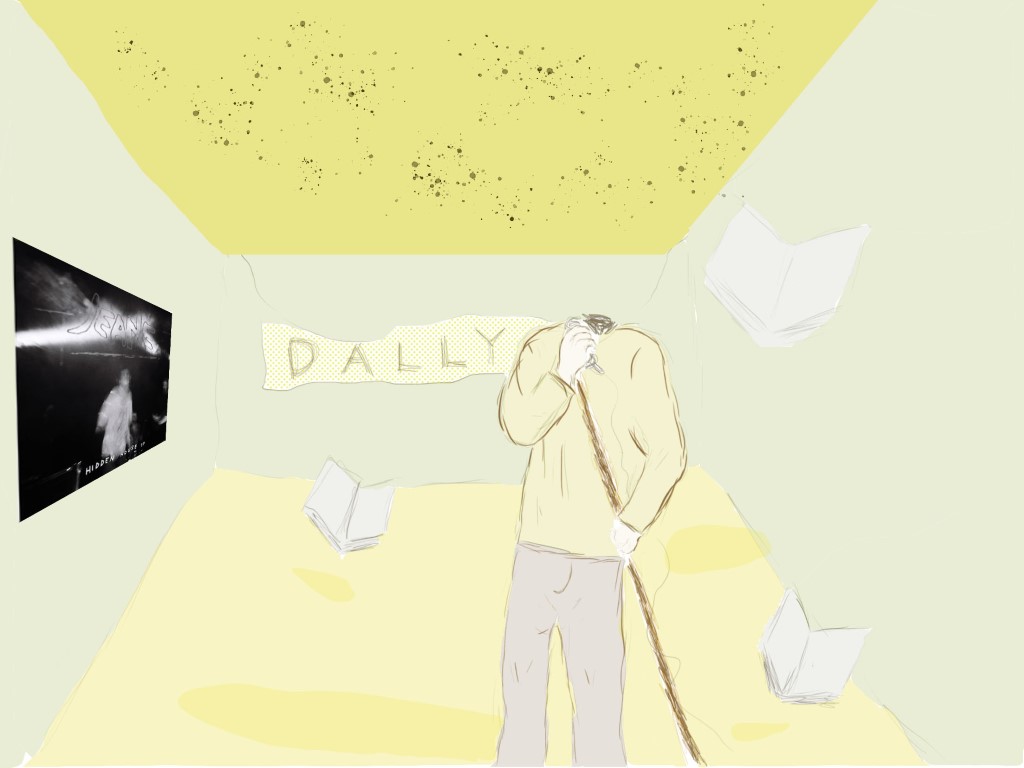
An exploration into the dance of language and history
By CJ Sommerfeld, Staff Writer
I first heard Dally via his 2018 folk album, New American. His slurred, conjunct vocals and clever lyrics lured me in.
Paul Dally is a New York based music multi-creative. He has manufactured works under various names, all of which are distinguishable by his droned voice. His projects vary from thick synthesized ensembles, to melancholic alternative, to dive-bar grunge.
I first heard Dally via his 2018 folk album, New American. His slurred, conjunct vocals and clever lyrics lured me in. His chord progressions felt familiar, hinting to other folk tracks I had heard before. The first time I Googled his name, I could not find much about him nor his music. After some time spent clicking, I found that many of his works varied in pseudonyms—project names if you will. The musical variation in these works revealed to me that the sounds on this one album displayed just a smidge of Dally’s full musical capabilities. The chord progressions on New American were not representative of everything else he has to offer.
Dally has been making music and producing albums for a bit over ten years. His projects include Jeane, a garage proto-punk band; the dreamy, alternative band Greenfield; and his earliest project, The Skins, a temperamental grunge duo. Throughout then and now, he has also produced a montage of synth soundscapes. His reverberate voice makes an appearance at times in these as it does in memotape, a double-sided digital album. On this particular album, his vocals are strangely evocative, reminiscent of English singer/songwriter King Krule—if Krule was listened to at 33 beats per minute. Some tracks are interjected with trumpets and others with synth-percussion, brass, and other sounds that play on emotion.
This digital album differs greatly from the sound of Jeane, a standard 4-piece, guitar, vocals, bass, and drums troupe that you would expect to watch in a dive. Here, Dally’s vocals are an unrefined version of what we hear in his newer work. Despite its similarity to ’90s garage punk, the band’s tunes are intricated with different layers emerging throughout. This music-project varies slightly from Greenfield, which seems to be a calmer offshoot ofJeane—a sort of dazed 1950s rockabilly. The Skins induce a more melancholic and pensive mood, perfect for Vancouver’s rainy days.
Dally’s projects are not limited to creating and producing music. Between 2016 and 2018 he hosted his own radio show via 8 Ball Radio titled “All Types of Dances.” Similar to his other projects, it was complex and contrasted from what was already out there. The program mixes a hodgepodge of tunes as well as explores music from a philosophical and historical context. The show did not so much operate as an easy-listening FM that you leave on while peeling potatoes, but instead probed thoughts that elevated this art medium. Its thirty-three episodes have been archived and can be listened to through Dally’s website.
On October 20, Dally released a fourteen-minute YouTube video. In it, he unravels the history that each of his current project’s tracks were built on; his new album is titled Vagrant Vistas. He resolves the different intricacies of this work, the by-product of which he explains as the “dances of language and history.” Two of the songs on his new album were inspired by the passing of the legendary John Prine. One of these two songs, “Kimmy Rolla,” is described by Dally as a “funeral parade,” and it is the last track on the collection. After listening to Dally’s reflection of how this collection of songs came to be, it makes me yearn for verbal recounts of all his previous work. Similar to Dally, I wrote an article regarding Kurt Vile’s ode to John Prine.
Despite Dally being the mastermind behind a plethora of projects, photos of himself on the internet are sparse. He is often masked behind graphics, a distant photograph, or radio-show microphone. I can appreciate an artist who is not caught up in their aesthetic nor social media, instead projecting their art to the world. This makes it feel more genuine, like the art was created for the sake of creating art, as opposed to being an accessory to the individual’s image. Dally’s mysterious demeanor lured me to pursue who this creative was—although it simultaneously created a sort of firewall preventing me from doing just that. Dally’s new album, Vagrant Vista, was released November 13—why not have a listen to this Delphic artist?


